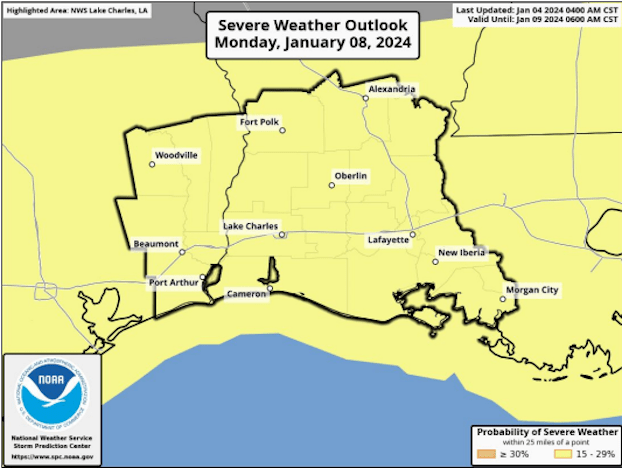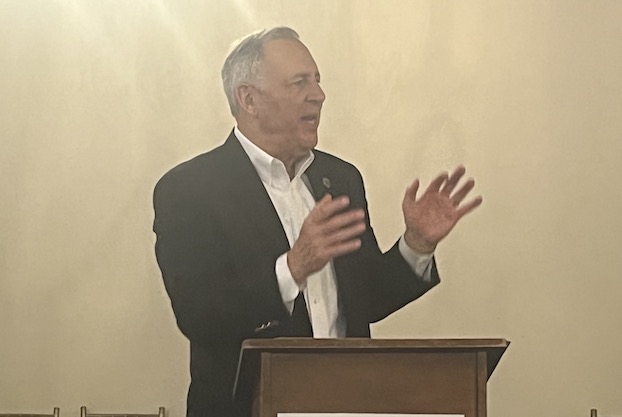Storm systems rolling into area Friday, again on Monday
Published 4:36 pm Thursday, January 4, 2024
Low pressure that is expected to form in the Gulf of Mexico could bring moderate to heavy rainfall to areas along and south of Interstate 10 on Friday.
According to the National Weather Service’s Lake Charles office, the storm system has the potential to bring rainfall amounts of one to two inches. There is a marginal risk the storm system will bring severe weather, said Doug Cramer, NWS warning coordination meteorologist.
There is also a chance of a storm system rolling through Southwest Louisiana on Monday. The NWS said there is a 15 percent chance of severe thunderstorms that could affect Southwest Louisiana into Monday night, with a forecast of rainfall of up to one inch of rain.
Trending
The storm system on Monday is expected to be accompanied by windy conditions. Cramer said all modes of severe weather will be possible during Monday’s storm, including “large hail, damaging wind gusts and tornadoes.”
“There are indications that Monday’s system will bring multiple hazards to the region. Everyone should remain weather aware and stay tuned through the weekend for updated forecasts regarding Monday’s risk for severe thunderstorms.”
Temperatures in Southwest Louisiana will remain seasonal following the storm systems, with highs in the 50s and 60 and lows in the 30s and 40s, he said.
These storm systems will bring much-needed rainfall to the area, which is still plagued with uncharacteristic drought conditions — the seventh-driest year since 1895. According to the National Integrated Drought Information System, Southwest Louisiana is experiencing severe, extreme and exceptional drought conditions. This time last year, the area experienced no drought conditions.
Cramer said while every storm system that rolls through the area helps negate the symptoms of the drought, it is hard to tell how much rainfall is needed to catch the area up to where it was last year.
“A group of climatologists and meteorologists determine drought severity, and precipitation is just one variable that goes into that equation.”
Trending
Current drought conditions can result in increased fire risk, lower water levels and poor air quality, according to NIDIS.






